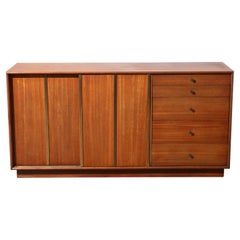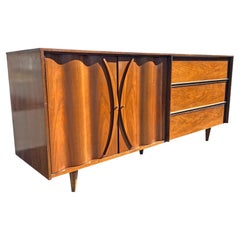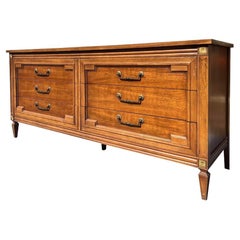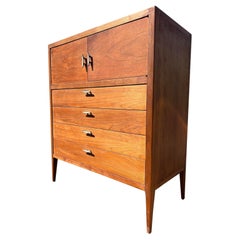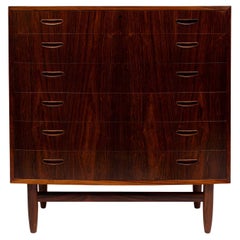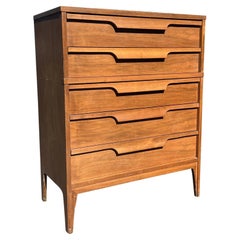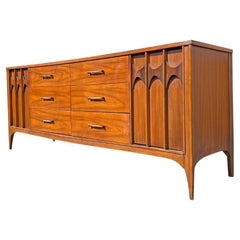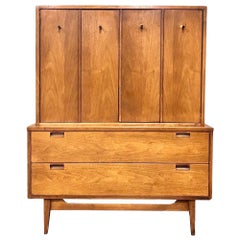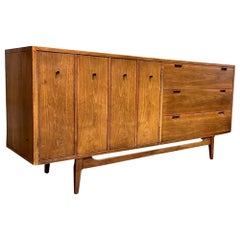Vintage 1960s Dressers
Vintage 1960s Mid-Century Modern Dressers
Brass
Vintage 1960s American Mid-Century Modern Dressers
Wood
Vintage 1960s American French Provincial Dressers
Wood
Vintage 1960s American Modern Dressers
Wood
Mid-20th Century Danish Mid-Century Modern Dressers
Rosewood
Vintage 1960s American Dressers
Wood
Vintage 1960s American Mid-Century Modern Dressers
Walnut
Vintage 1960s American Mid-Century Modern Dressers
Walnut
Vintage 1960s American Mid-Century Modern Dressers
Walnut
Vintage 1960s American Mid-Century Modern Dressers
Brass
Mid-20th Century Mid-Century Modern Dressers
Wood, Walnut
Vintage 1960s Mid-Century Modern Dressers
Wood
Vintage 1960s Mid-Century Modern Dressers
Brass
Vintage 1960s Portuguese Mid-Century Modern Dressers
Laminate, Wood
Mid-20th Century Danish Mid-Century Modern Dressers
Rosewood
Vintage 1960s Danish Scandinavian Modern Dressers
Teak
Vintage 1960s Danish Scandinavian Modern Dressers
Teak
Vintage 1960s American Mid-Century Modern Dressers
Rosewood, Walnut
Vintage 1960s American Mid-Century Modern Dressers
Teak
Vintage 1960s Mid-Century Modern Dressers
Walnut
Vintage 1960s American Mid-Century Modern Dressers
Brass
Mid-20th Century Danish Mid-Century Modern Dressers
Teak
Vintage 1960s Danish Scandinavian Modern Dressers
Rosewood
Vintage 1960s Swedish Sideboards
Teak
Vintage 1960s American Mid-Century Modern Commodes and Chests of Drawers
Wood, Walnut
Vintage 1960s American Mid-Century Modern Commodes and Chests of Drawers
Walnut
Vintage 1960s American Mid-Century Modern Cabinets
Aluminum
Vintage 1950s American Mid-Century Modern Cabinets
Aluminum
Vintage 1960s Italian Commodes and Chests of Drawers
Brass
Vintage 1960s Danish Mid-Century Modern Dressers
Wood, Rosewood
Vintage 1960s Great Britain (UK) Mid-Century Modern Dressers
Mid-20th Century Swedish Scandinavian Modern Cabinets
Teak
Vintage 1960s Danish Mid-Century Modern Commodes and Chests of Drawers
Teak
Vintage 1960s Scandinavian Mid-Century Modern Dressers
Nutwood
Vintage 1960s Danish Mid-Century Modern Dressers
Teak
Mid-20th Century Danish Mid-Century Modern Dressers
Teak
Vintage 1960s Danish Mid-Century Modern Dressers
Teak
Vintage 1960s Italian Mid-Century Modern Dressers
Onyx, Metal, Brass
Vintage 1960s American Mid-Century Modern Dressers
Mahogany
Vintage 1960s Danish Mid-Century Modern Dressers
Teak
Vintage 1960s Danish Scandinavian Modern Dressers
Teak
Mid-20th Century Danish Mid-Century Modern Dressers
Teak
Mid-20th Century Danish Mid-Century Modern Dressers
Teak
Vintage 1960s American Mid-Century Modern Dressers
Walnut
Vintage 1960s American Mid-Century Modern Dressers
Brass
Mid-20th Century Danish Mid-Century Modern Dressers
Teak
Mid-20th Century Danish Dressers
Teak
Vintage 1960s Italian Mid-Century Modern Dressers
Brass
Vintage 1960s American Mid-Century Modern Dressers
Walnut
Vintage 1960s American Mid-Century Modern Dressers
Birch
Vintage 1960s American Mid-Century Modern Dressers
Wood
Vintage 1960s Unknown Mid-Century Modern Dressers
Wood
Vintage 1960s American Dressers
Wood
Vintage 1960s American Mid-Century Modern Dressers
Walnut
Vintage 1960s American Mid-Century Modern Dressers
Walnut, Burl
Vintage 1960s American Mid-Century Modern Dressers
Walnut
Vintage 1960s American Mid-Century Modern Dressers
Walnut, Burl
Vintage 1960s American Mid-Century Modern Dressers
Chrome
Mid-20th Century Danish Mid-Century Modern Dressers
Teak
Vintage 1960s Danish Mid-Century Modern Dressers
Teak
- 1
Vintage 1960s Dressers For Sale on 1stDibs
How Much are Vintage 1960s Dressers?
Finding the Right Storage-case-pieces for You
Of all the vintage storage cabinets and antique case pieces that have become popular in modern interiors over the years, dressers, credenzas and cabinets have long been home staples, perfect for routine storage or protection of personal items.
In the mid-19th century, cabinetmakers would mimic styles originating in the Louis XIV, Louis XV and Louis XVI eras for their dressers, bookshelves and other structures, and, later, simpler, streamlined wood designs allowed these “case pieces” or “case goods” — any furnishing that is unupholstered and has some semblance of a storage component — to blend into the background of any interior.
Mid-century modern furniture enthusiasts will cite the tall modular wall units crafted in teak and other sought-after woods of the era by the likes of George Nelson, Poul Cadovius and Finn Juhl. For these highly customizable furnishings, designers of the day delivered an alternative to big, heavy bookcases by considering the use of space — and, in particular, walls — in new and innovative ways. Mid-century modern credenzas, which, long and low, evolved from tables that were built as early as the 14th century in Italy, typically have no legs or very short legs and have grown in popularity as an alluring storage option over time.
Although the name immediately invokes images of clothing, dressers were initially created in Europe for a much different purpose. This furnishing was initially a flat-surfaced, low-profile side table equipped with a few drawers — a common fixture used to dress and prepare meats in English kitchens throughout the Tudor period. The drawers served as perfect utensil storage. It wasn’t until the design made its way to North America that it became enlarged and equipped with enough space to hold clothing and cosmetics. The very history of case pieces is a testament to their versatility and well-earned place in any room.
In the spirit of positioning your case goods center stage, decluttering can now be design-minded.
A contemporary case piece with open shelving and painted wood details can prove functional as a storage unit as easily as it can a room divider. Alternatively, apothecary cabinets are charming case goods similar in size to early dressers or commodes but with uniquely sized shelving and (often numerous) drawers.
Whether you’re seeking a playful sideboard that features colored glass and metal details, an antique Italian hand-carved storage cabinet or a glass-door vitrine to store and show off your collectibles, there are options for you on 1stDibs.
- What is a caftan from the 1960s?1 Answer1stDibs ExpertFebruary 13, 2023A caftan from the 1960s or any other era refers to a long ankle-length variation on a robe or a tunic. Caftans, which are sometimes referred to as kaftans, feature full sleeves and usually have a deep, open neck. While these garments can be made from any fabric, most caftans are made of wool, silk or cotton. Find a selection of caftans from top fashion boutiques around the world on 1stDibs.
- Were there watches in the 1960s?1 Answer1stDibs ExpertFebruary 13, 2023Yes, there were watches in the 1960s. The first recorded wristwatch dates back to 1868, when Patek Philippe, a watchmaker founded in Geneva in 1839 by Polish expats Antoni Patek and Franciszek Czapek, designed a timepiece for Countess Koscowicz of Hungary. Shop a collection of vintage watches from some of the world’s top sellers on 1stDibs.
- What was worn in the 1960s?1 Answer1stDibs ExpertFebruary 22, 2021Fashion in the 1960s progressed toward a more casual look for men and for women during the decade. For women, the skirt suits of the 1950s prevailed during the early ‘60s and eventually miniskirts came along. Late-1960s fashion included ponchos, peace signs, chain belts, puffed “bubble” sleeves, frayed bell-bottom jeans for men and women, tie-dyed shirts, work shirts, sandals, headbands and moccasins.
- 1stDibs ExpertFebruary 13, 2023Furniture from the 1960s is often called mid-century modern. This style emphasizes the importance of good design that looks attractive and performs its function well. Notable mid-century modern designers include Eero Saarinen, George Nelson, Florence Knoll and Charles and Ray Eames. On 1stDibs, shop a selection of mid-century modern furniture.
- 1stDibs ExpertFebruary 21, 2024The dresses they wore in the 1960s varied depending on the time of day and the occasion. For everyday wear, many women opted for simply tailored frocks called shift dresses. They often featured bold geometric prints in eye-catching colors. In the evening, women tended to opt for gowns with plunging necklines, fitted waists and flowing full skirts. On 1stDibs, shop a diverse assortment of vintage dresses from the 1960s.
- What did men wear in the 1960s?1 Answer1stDibs ExpertApril 26, 2024What men wore in the 1960s varied over the course of the decade. At the start of the ’60s, when the Mod style was all the rage, men often sported boxy Italian-style suits with tight-fitting trousers for work and dressier occasions and polo shirts and turtlenecks paired with fitted trousers for casual dress. As the decade progressed, the Peacock Revolution occurred, with menswear becoming flashier with bright colors and bold prints. Fedoras and trilby hats were common in the early ’60s, but by the start of the 1970s, hats for men were much less common, marking a major departure from the style conventions of the 1930s, ’40s and ’50s. Explore an assortment of 1960s men's apparel and accessories on 1stDibs.
- 1stDibs ExpertApril 5, 2022To tell if a dress is from the 1960s or 1970s, first look for a label. You may be able to determine the approximate date of the dress simply by researching the designer using reputable online sources. Also, check the zippers. Dresses from the 1960s will usually have metal or nylon zippers. Ones from the 1970s are more likely to be plastic. You'll find a large selection of vintage dresses on 1stDibs.
- 1stDibs ExpertApril 5, 2022Go-go boots were fashionable in the late 1960s through the 1970s. A calf-length to knee-length boot became synonymous with 1960s and 1970s fashion and is still highly coveted today by fashion enthusiasts. Shop a wide range of vintage go-go boots on 1stDibs.
- 1stDibs ExpertSeptember 27, 2024What the dress style was called in the 1960s varied, as there were several types of dresses that were fashionable during the decade. At the start of the 1960s, many women wore swing dresses featuring fitted bodices and full skirts. Collared, button-up belted dresses called shirtwaist dresses were also popular, as were loose-fitting, flowy shift dresses. By the late 1960s, new styles emerged, such as flared, flowing tent dresses, sleeveless jumpers usually styled over sweaters and blouses and drop-waist dresses, which had their waist seams at the hips rather than the natural waist. Find a variety of 1960s dresses and other vintage dresses on 1stDibs.
- 1stDibs ExpertFebruary 21, 2024Who the most famous fashion designer of the 1960s was is open to debate. Many designers helped define the looks of the decade, each influencing style in their own way. Among these notable designers were Mary Quant, André Courrèges, Pierre Cardin, Yves Saint Laurent, Bonnie Cashin, Hubert de Givenchy, Emilio Pucci, Paco Rabanne and Ossie Clark. On 1stDibs, shop a variety of vintage apparel and accessories from the 1960s.
- 1stDibs ExpertFebruary 1, 2024Generally, 1960s-style furniture is called mid-century modern. The style, which emerged primarily in the years following World War II, is characterized by pieces that were conceived and made in an energetic, optimistic spirit by creators who believed that good design was an essential part of good living. Some of the most notable furniture designers of the time include Charles and Ray Eames, Arne Jacobsen, Eero Saarinen and Hans J. Wegner. On 1stDibs, shop a variety of mid-century modern furniture.
- Which artist became famous for his series of black paintings in the late 1950s and early 1960s?1 Answer1stDibs ExpertJanuary 27, 2025Frank Stella is the artist who became famous for his series of black paintings in the late 1950s and early 1960s. These works featured bands of black paint separated by thin, precise stripes of bare canvas. At a time when contemporary painting was all about wild gestures, thick paint and formal abandon, the “Black Paintings” created a sensation. Explore a range of Frank Stella art on 1stDibs.
